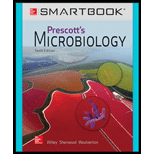
Without looking in chapters 21 and 22, predict some characteristics that would describe niches occupied by green and purple photosynthetic bacteria.
The nutrition is universal factor that is required to carry out actions and metabolic function of all the organisms. The nutrition is need by the cells or microbes or animals to carry out various functions. Moreover, the nutritional need of the microbes can be varied in the form of energy, electron, and carbon source.
Explanation of Solution
The photolithoautotrophs can acquire light as the source of energy, reduced inorganic substances and gain electrons, and finally able to fix carbon dioxide from the electron that is obtained by the reduction of inorganic compounds. For example, Cyanobacteria, Green sulfur bacteria, purple sulfur bacteria, and Photosynthetic protists. The photolithotrophs are anaerobic that does not need oxygen as their terminal electron, whereas organic compounds, sulfur, and hydrogen sulfide are gained as the terminal electron. As these microbes can effectively utilize the inorganic compounds, they are able to live in sulfur vents in the deep ocean waters. Moreover, these photolitotrophic bacteria have pigments known as bacteriochlorophylls that can absorb light range from 350-550nm, which can penetrate deep into the water.
Want to see more full solutions like this?
Chapter 11 Solutions
PRESCOTT'S MICRO.(LL)W/ACCESS >CUSTOM<